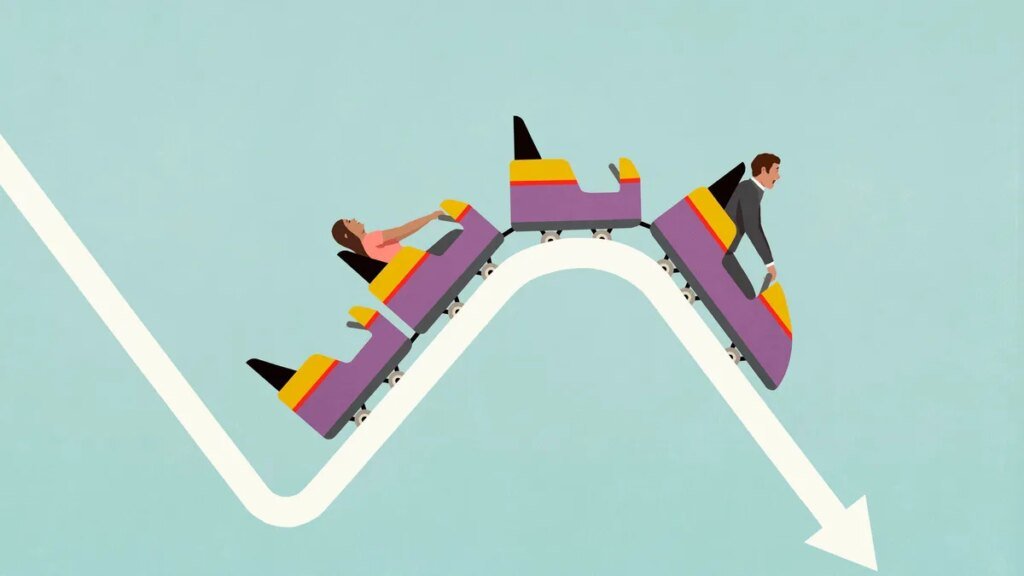Follow ZDNET: Add us as a preferred source on Google.
ZDNET’s key takeaways
- Many have feared an impending AI “jobs apocalypse.”
- Gartner says the future of AI and jobs will be more nuanced.
- For now, the company urges business owners to stay adaptable.
No one knows exactly how AI will transform the job market — just that it will create some big changes. Some tech leaders and firms have predicted that the technology will eliminate vast numbers or entire categories of jobs. Elsewhere, other researchers assert that AI will transform rather than eliminate jobs (or, in some cases, even create new jobs).
Also: Anxious about AI job cuts? How white-collar workers can protect themselves – starting now
In remarks published Tuesday, market research firm Gartner predicted that rather than producing the “jobs apocalypse” that many have feared, AI will instead cause “jobs chaos”: a general ripple effect throughout the labor market wherein virtually every business has to adapt, in varying ways, to the arrival of intelligent machines that are better at some tasks than human employees — but that also, importantly, fall short in other areas.
In other words, as with other technological revolutions throughout history, there won’t be a monolithic change that uniformly affects all jobs; instead, AI will produce a patchwork of new workplace models. The matter of which one ultimately works best is a puzzle that individual businesses will need to figure out along the way, according to Gartner.
This more nuanced vision of the future is further supported by recent studies from Georgia State University and hiring platform Indeed, both of which stress the point that AI—at least in the foreseeable future — is more likely to automate particular job responsibilities and skills than jobs wholesale.
Also: Is AI a career killer? Not if you have these skills, McKinsey research shows
Businesses can expect this wave of change to arrive in full sometime between 2028 and 2029, according to Gartner’s forecast. Crucially, the company also says that AI is likely to create more jobs than it eliminates.
Four possible AI-powered workplaces
Gartner narrowed down this patchwork to four basic prototypes, each of which represents a distinct relationship between human workers and their burgeoning AI counterparts.
In the first scenario, the adoption of AI leads to a few human workers performing tasks that AI models or agents can’t handle. Think customer service: a sector that’s particularly ripe for AI-powered automation, but that still benefits from keeping humans somewhere in the loop.
Also: Does your chatbot have ‘brain rot’? 4 ways to tell
The second human-AI workplace model laid out by Gartner is one in which AI autonomously handles part or the entirety of a business. In other words, AI replaces all, or all but a few, human workers.
In the third scenario, a large number of human workers are using AI tools to do more work at a quicker pace.
Finally, the fourth — and arguably most optimistic — scenario envisions a workplace in which human professionals leverage AI to revolutionize the basic tenets of their field. For example, imagine the medical community embracing AI at scale to deliver a new level of personalized medicine to each patient.
Takeaway for businesses
Speaking at the Gartner IT Symposium/Xpo in Barcelona on Tuesday [NTC], Gartner analyst Helen Poitevin emphasized that, given the fluid and dynamic nature of AI development, no business can say for certain yet exactly how jobs will be transformed over the long run by AI.
Also: In the age of AI, trust has never been more important – here’s why
Though the patchwork of the four basic workplace models Gartner laid out can provide a blueprint for the future, employers need to stay nimble, adaptable, and open-minded.
“No matter which scenario executive leaders pursue, they must be ready to support all four,” Poitevin said.
